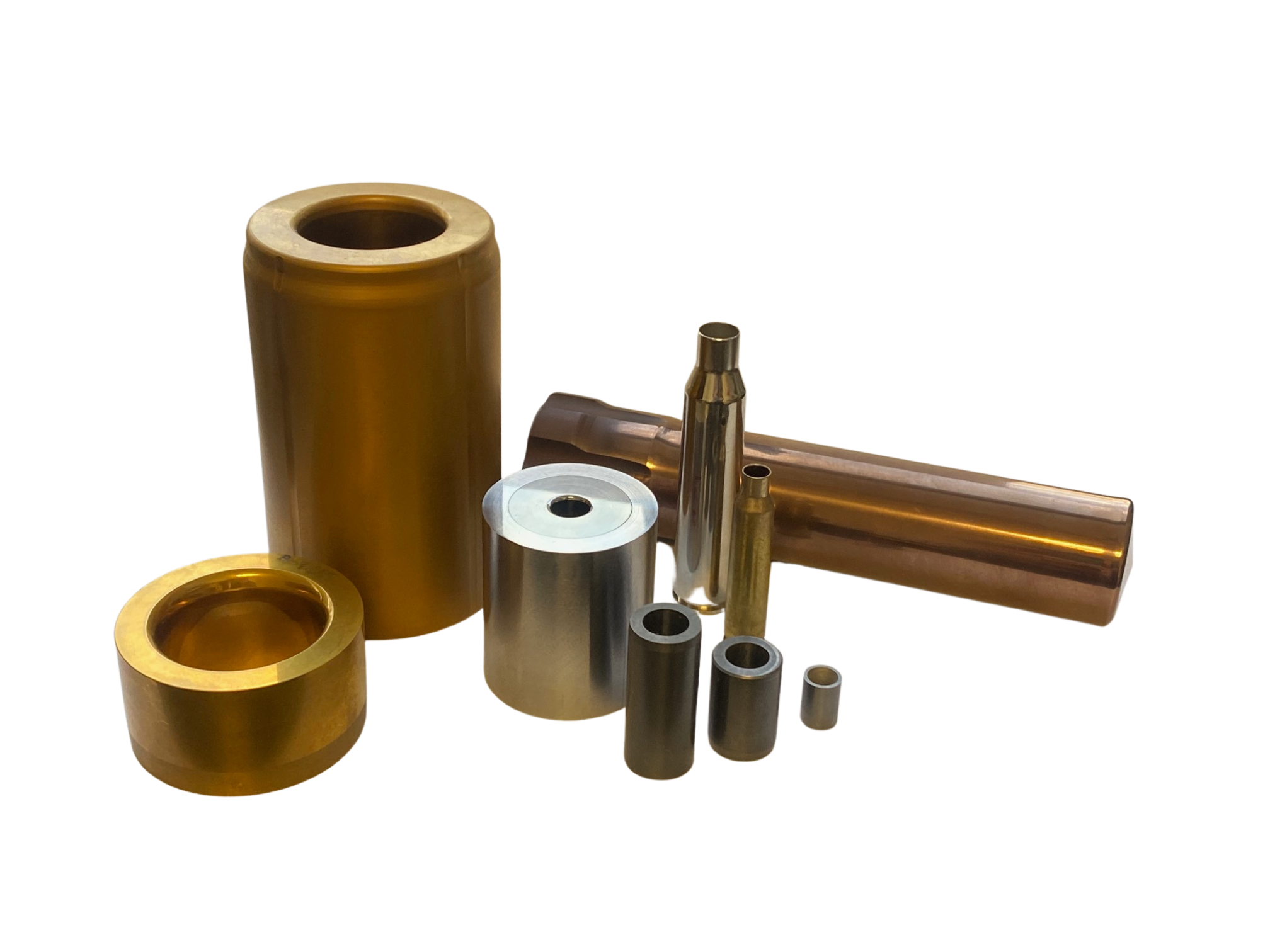Cemented carbide is an extremely hard material used in industrial applications, typically to
 |
| Cemented Carbide Dies |
form metals like steel, aluminum and brass. Since carbide is so hard, it’s a very good material to fashion cutting tools as well, again, usually to cut metals, and is around three times harder and twice as dense as steel. Cemented carbide, also called tungsten carbide, is a chemical compound consisting of fine particles of carbide cemented by a binder metal, typically cobalt although titanium, tantalum and nickel can also be added to get different properties.
Cemented carbide is used to make superior products in high wear applications. Carbide Dies last many times longer than steal dies under heavy impact and heavy wear conditions. While carbide punches can stand up to a beating that would deform their steel counterparts. Another example is that carbide drill bushings typically last over ten times as long as steel bushings.
There are also advantages to working with a carbide cutter. Carbide cutters typically leave a better surface finish and allow for faster machining.
For all cemented carbides additional strengths they do have a few down sides, for one, carbide tools are more expensive due to additional effort the involved with forming the harder material. The most common way to shape cemented carbide is to use diamond grinding wheels. Cemented carbide tools are also more brittle than typical tools. To combat this, the cutting tip of the tool is often a small carbide insert mounted or soldered onto a steel shank or cutter.
Cemented carbide has
been used in a wide variety of industries due to its extreme wear properties,
everything from medical to mining. For example cemented carbide is used
extensively in the global steel industry. Since the 1960’s steel mills have
used cemented carbide for the rolls of their mills. Other industrial
applications of carbide include automotive components, drawing tools, rotary
cutters, forming dies, rings, bushings and many more.
History of Cemented
Carbide
Cemented carbide was
first developed in Germany during the 1920s, sintered tungsten carbide was
developed by a group called the Osram Study Society for Electrical Lighting.
However, since they didn’t have the equipment to take advantage of this
material, Osram sold the license to the sinister Krupp Company in 1925. In
1926, carbide hit the market under the name WIDIA (like diamond) and was also
known by the cool name of Wolfram. Since then cemented carbide, often called
tungsten carbide (although this is a more specific term), has proliferated in many industries and as components in
machinery. We can expect the uses and production of cemented carbide tooling to
continue long into the future.






No comments:
Post a Comment